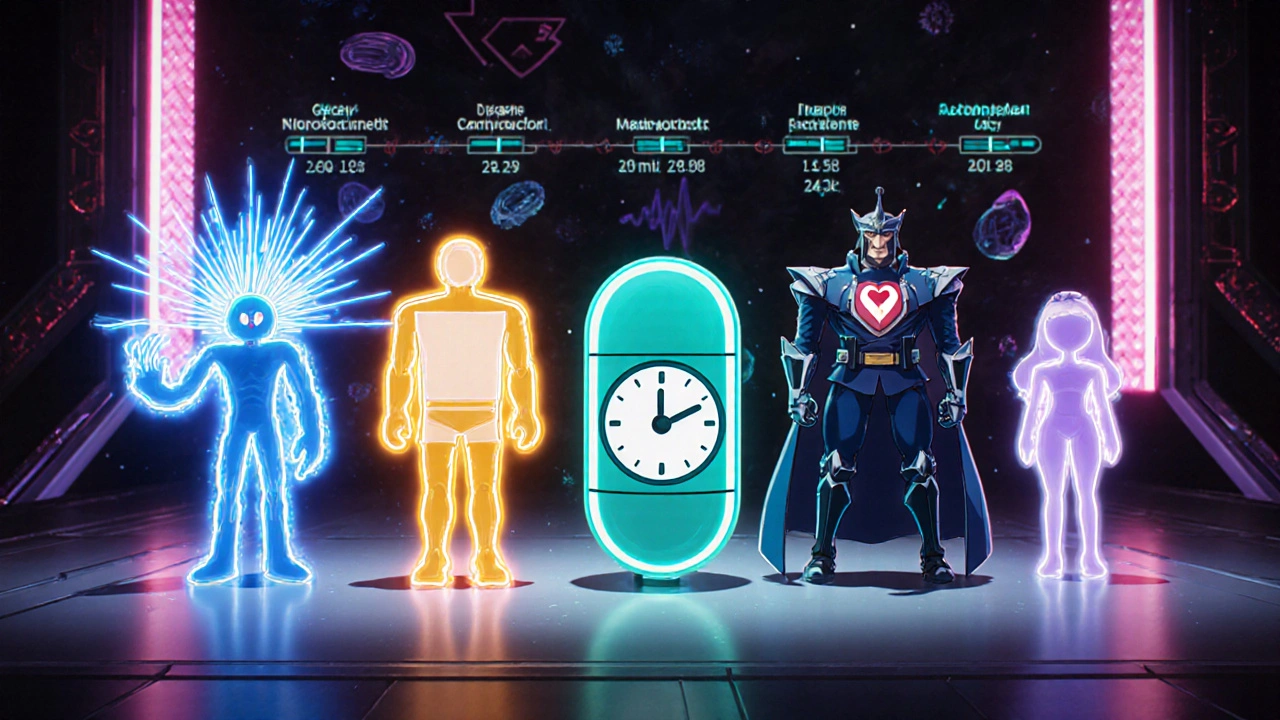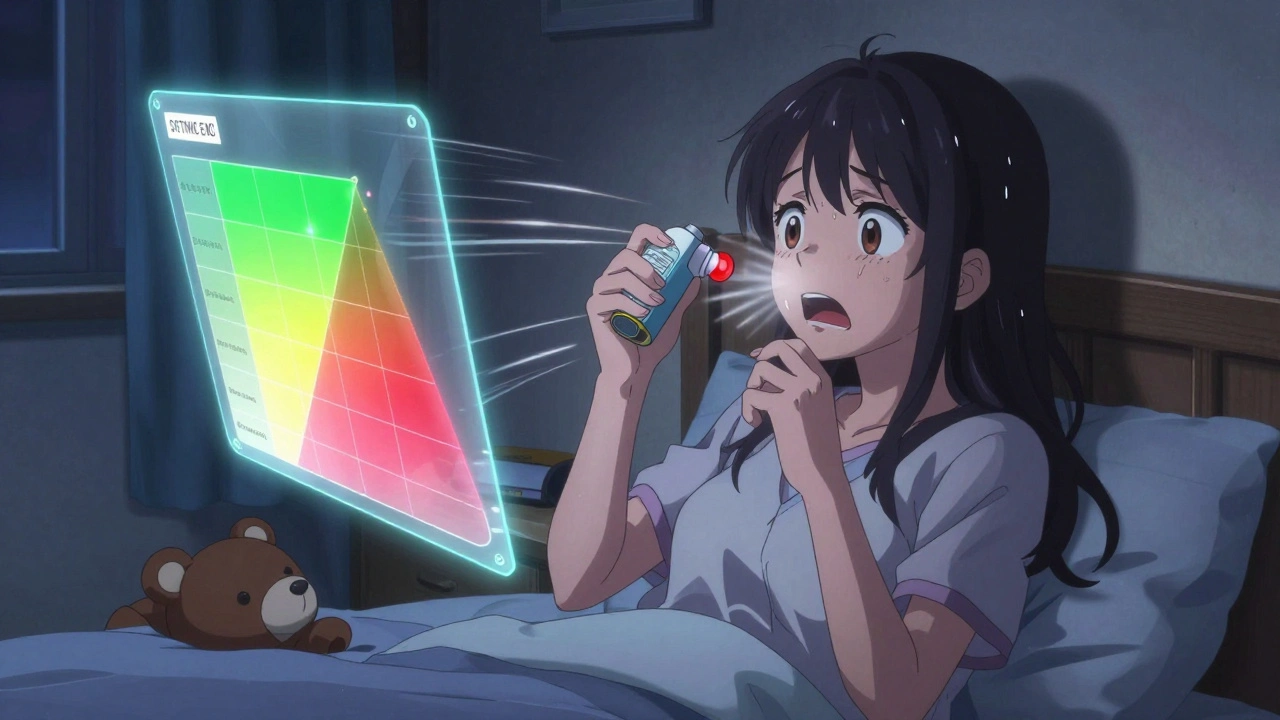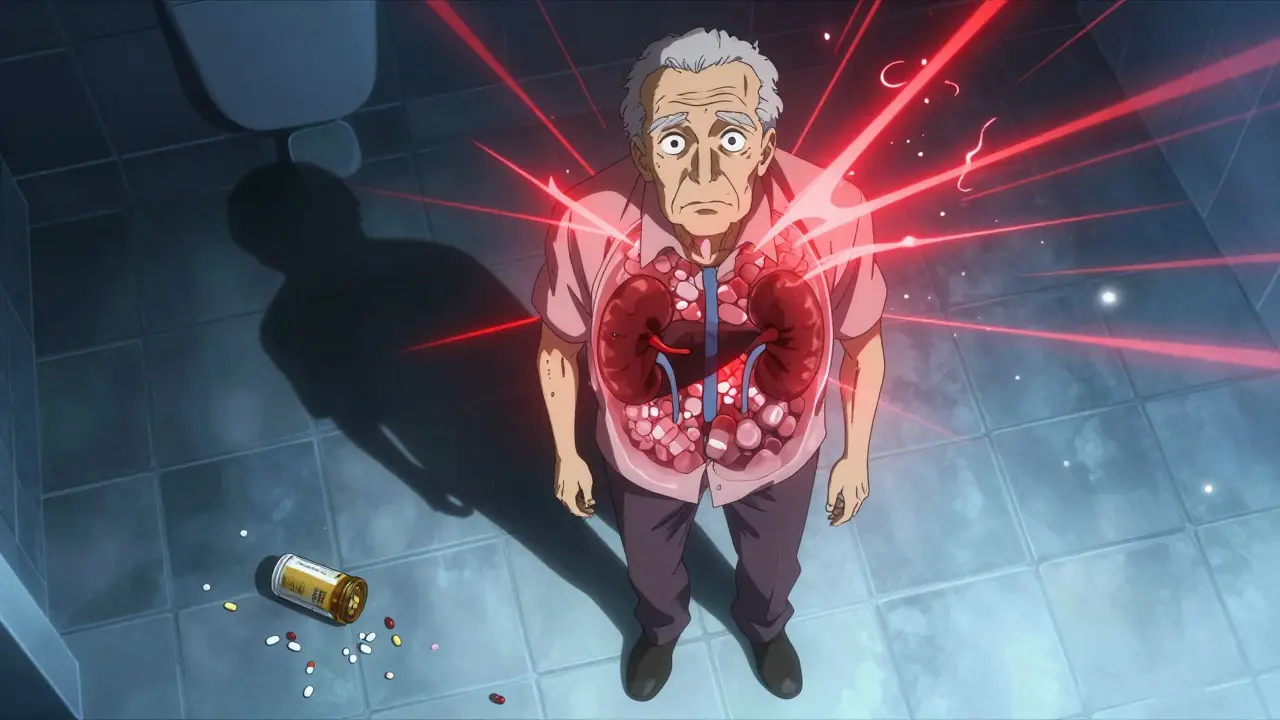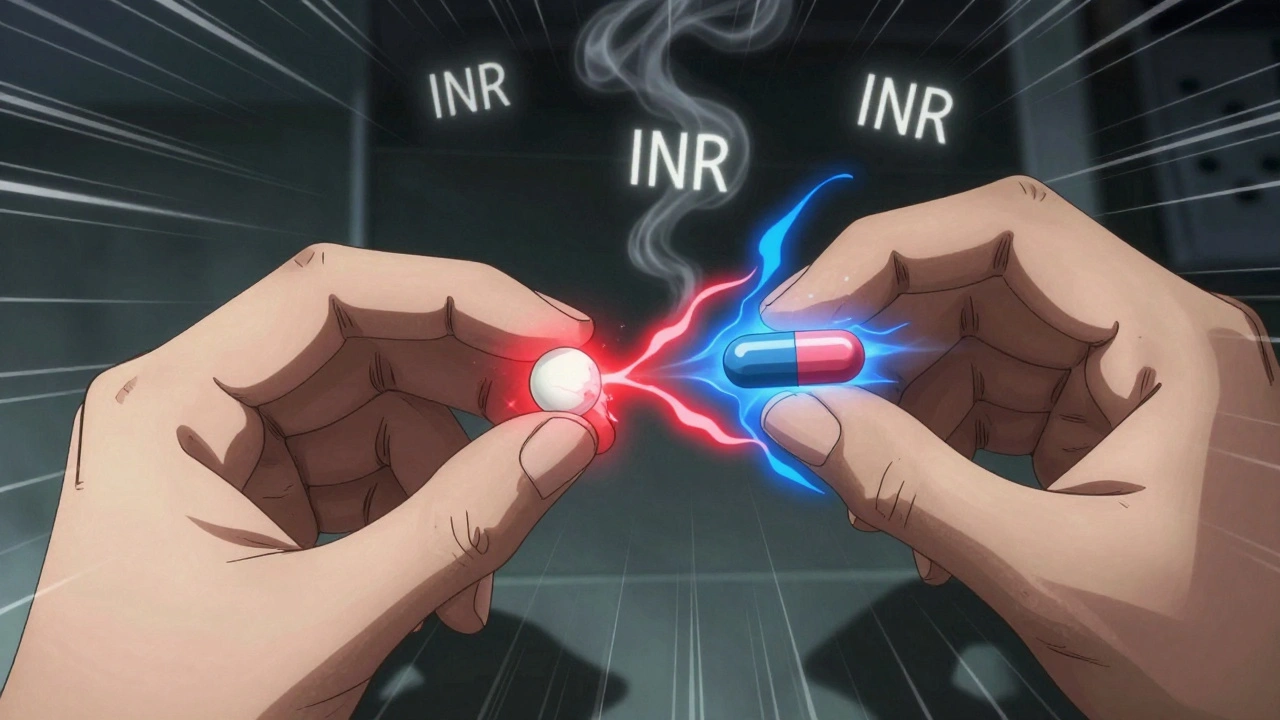Imdur (Isosorbide Mononitrate) vs Alternative Nitrates: Full Comparison

Quick Summary
If you’re dealing with angina or other chest‑pain conditions, you’ve probably heard of Imdur. It’s a long‑acting nitrate that helps keep blood vessels relaxed over the day. But it isn’t the only option. In this guide we’ll break down how Imdur stacks up against nitroglycerin, isosorbide dinitrate, ranolazine, beta‑blockers like metoprolol, and calcium‑channel blockers such as amlodipine. By the end you’ll know which drug matches your lifestyle, dosing preferences, and side‑effect tolerance.
What is Imdur (Isosorbide Mononitrate)?
Imdur is a brand name for isosorbide mononitrate, a nitrate medication that releases nitric oxide slowly to widen blood vessels. First approved by the FDA in 1996, it’s taken once daily (or twice at lower doses) to prevent episodes of stable angina. Because it doesn’t need the rapid‑onset “spray‑or‑tablet‑under‑tongue” method of short‑acting nitrates, it fits easily into a morning routine.
Key facts about Imdur:
- Available in 30 mg, 60 mg, and 120 mg tablets.
- Onset of action: 30‑60 minutes.
- Duration: 12‑24 hours, providing around‑the‑clock coverage.
- Common side effects: headache, dizziness, flushing.
How Imdur Works - The Chemistry in Plain English
When you swallow an Imdur tablet, the isosorbide mononitrate molecule travels to your bloodstream and splits, releasing nitric oxide (NO). NO signals the smooth muscle in vessel walls to relax, which lowers arterial pressure and reduces the heart’s workload. Think of it as turning down the volume on a speaker so the heart doesn’t have to crank up its output during physical activity.
This steady release avoids the “peaks and valleys” you get with short‑acting nitrates, which can cause tolerance if used too frequently. That’s why doctors often prescribe Imdur for chronic prevention rather than emergency relief.

Alternative Nitrates and Non‑Nitrate Options
Not everyone tolerates Imdur well, and sometimes doctors need a backup plan. Below are the most common alternatives, each with its own pros and cons.
1. Nitroglycerin (GTN)
Nitroglycerin is a short‑acting nitrate available as sublingual tablets, sprays, and transdermal patches. It works within minutes, making it ideal for sudden angina attacks.
- Onset: 1‑3 minutes (sublingual).
- Duration: 30‑60 minutes.
- Typical dose: 0.3‑0.6 mg sublingual, repeat every 5‑10 minutes up to three doses.
- Side effects: intense headache, hypotension, reflex tachycardia.
Because it’s fast, many patients keep a nitroglycerin spray in their bag for emergency use, while taking a long‑acting nitrate like Imdur for daily coverage.
2. Isosorbide Dinitrate (ISDN)
Isosorbide Dinitrate (often sold as Isordil) is another nitrate, but unlike mononitrate it has a quicker onset and a shorter half‑life. It’s usually prescribed in divided doses throughout the day.
- Onset: 15‑30 minutes.
- Duration: 4‑6 hours.
- Typical dose: 5‑20 mg two to three times daily.
- Side effects: headache, flushing, dizziness, tolerance if taken too often.
Some clinicians pair ISDN with a long‑acting nitrate to smooth out coverage, but they must schedule a nitrate‑free interval to prevent tolerance.
3. Ranolazine
Ranolazine (Ranexa) isn’t a nitrate at all. It works by improving the efficiency of heart muscle cells, reducing the oxygen demand without changing heart rate or blood pressure.
- Onset: 2‑3 hours.
- Duration: 12‑24 hours (once‑daily dosing).
- Typical dose: 500 mg twice daily, titrated up to 1000 mg twice daily.
- Side effects: dizziness, nausea, constipation, QT‑prolongation (requires ECG monitoring).
Ranolazine is a good fallback for patients who can’t tolerate nitrates because it avoids the classic nitrate headache.
4. Beta‑Blockers (e.g., Metoprolol)
Metoprolol is a selective beta‑1 blocker that slows heart rate and reduces contractility, cutting down the heart’s oxygen demand.
- Onset: 1‑2 hours.
- Duration: 12 hours (extended‑release).
- Typical dose: 50‑200 mg once daily (ER).
- Side effects: fatigue, bradycardia, cold extremities, depression.
Beta‑blockers are often first‑line for chronic angina, especially if the patient also has hypertension or a history of heart attack.
5. Calcium‑Channel Blockers (e.g., Amlodipine)
Amlodipine relaxes smooth muscle in both arteries and veins, lowering afterload and improving blood flow to the heart.
- Onset: 2‑3 hours.
- Duration: 24 hours (once daily).
- Typical dose: 5‑10 mg daily.
- Side effects: ankle swelling, flushing, gingival overgrowth.
It’s handy for patients who also need blood‑pressure control and can’t use nitrates due to severe headache intolerance.
Side‑by‑Side Comparison Table
| Drug | Class | Onset | Duration | Typical Dose | Major Side Effects |
|---|---|---|---|---|---|
| Imdur | Long‑acting nitrate | 30‑60 min | 12‑24 h | 30‑120 mg once daily | Headache, dizziness, flushing |
| Nitroglycerin | Short‑acting nitrate | 1‑3 min | 30‑60 min | 0.3‑0.6 mg sublingual as needed | Severe headache, hypotension |
| Isosorbide Dinitrate | Intermediate‑acting nitrate | 15‑30 min | 4‑6 h | 5‑20 mg 2‑3×/day | Headache, tolerance, dizziness |
| Ranolazine | Anti‑anginal, non‑nitrate | 2‑3 h | 12‑24 h | 500‑1000 mg twice daily | QT prolongation, nausea, constipation |
| Metoprolol | Beta‑blocker | 1‑2 h | 12 h (ER) | 50‑200 mg daily | Fatigue, bradycardia, cold hands |
| Amlodipine | Calcium‑channel blocker | 2‑3 h | 24 h | 5‑10 mg daily | Swelling, flushing, gum overgrowth |
Choosing the Right Option for You
Every drug has trade‑offs, so a good pick depends on three practical questions:
- Do you need fast relief or long‑term prevention? If sudden chest pain strikes, keep nitroglycerin on hand. For day‑to‑day control, Imdur or a once‑daily calcium‑channel blocker fits better.
- How does your body handle headaches? Nitrate‑related headaches affect up to 30 % of patients. If you’re headache‑prone, a non‑nitrate like ranolazine or a beta‑blocker may spare you.
- Any other health conditions? Diabetes, chronic kidney disease, or severe hypotension can steer you away from certain nitrates or beta‑blockers. Your doctor will weigh blood‑pressure goals, heart‑rate targets, and drug interactions.
In practice, many cardiologists start with a beta‑blocker + a low‑dose nitrate (often Imdur) and add a calcium‑channel blocker if symptoms persist. That combo hits heart‑rate reduction, vessel dilation, and blood‑pressure control all at once.
Potential Pitfalls and How to Avoid Them
- Tolerance: Taking nitrates around the clock can make them less effective. Set a nitrate‑free interval of at least 8‑10 hours-something Imdur’s once‑daily schedule helps with.
- Drug Interactions: Avoid combining nitrates with phosphodiesterase‑5 inhibitors (Viagra, Cialis) because the combo can cause a dangerous drop in blood pressure.
- Missed Doses: If you forget an Imdur tablet, take it as soon as you remember-unless it’s almost time for your next dose. Doubling up raises the risk of severe headache.
- Monitoring: Routine labs aren’t usually needed for nitrates, but for ranolazine you’ll need an ECG at baseline and periodically thereafter.
FAQs - Your Most Common Questions Answered
Can I take Imdur and nitroglycerin together?
Yes, many doctors prescribe Imdur for daily prevention and give nitroglycerin for breakthrough pain. Just keep the nitrate‑free interval to avoid tolerance.
What makes ranolazine different from nitrates?
Ranolazine works on the heart’s metabolism, not on blood‑vessel dilation. That means you won’t get the classic nitrate headache, but you do need periodic ECG checks for QT‑prolongation.
Is it safe to combine a beta‑blocker with Imdur?
Generally, yes. The combo attacks angina from two angles-slower heart rate and relaxed vessels. Your doctor will monitor blood pressure and heart rate to keep everything in range.
Why do some patients develop tolerance to nitrates?
Continuous exposure blunts the body’s nitric‑oxide response. That’s why a daily‑dose nitrate like Imdur works best with an overnight break or by rotating with a different class.
Can I switch from Imdur to a calcium‑channel blocker?
You can, but do it under medical supervision. The doctor will taper the nitrate while starting the calcium‑channel blocker to avoid a gap in symptom control.
Bottom Line
Choosing a heart‑health medication isn’t one‑size‑fits‑all. Imdur offers simple once‑daily dosing and stable coverage, but it can cause headaches and needs a nitrate‑free interval. Alternatives like nitroglycerin give instant relief, while drugs such as ranolazine, metoprolol, and amlodipine address angina from different physiological angles. Talk to your cardiologist about your daily routine, side‑effect tolerance, and any other conditions you have. With the right combination, you’ll keep chest pain at bay without sacrificing quality of life.






Comments
Carolyn Cameron
October 26, 2025 AT 17:38While the exposition of Imdur's pharmacodynamics is admirably detailed, the author unfortunately overlooks the critical interplay between nitrate tolerance and long‑term endothelial remodeling. Moreover, the comparative tables would benefit from a more nuanced discussion of pharmacokinetic variability among patient subpopulations. The omission of robust data on concomitant use with phosphodiesterase‑5 inhibitors is a glaring oversight. It is incumbent upon clinicians to weigh these interactions before endorsing Imdur as a blanket solution. In essence, the piece offers breadth but sacrifices depth where it matters most.
sarah basarya
October 27, 2025 AT 00:06Oh, the drama of drug choice! Imagine the sheer panic when a nitrate‑induced headache decides to crash your brunch, only to be soothed by a beta‑blocker that makes you feel like a statue. The guide tries to be comprehensive, yet it glosses over the emotional roller‑coaster patients endure when swapping between Imdur and nitroglycerin. Let’s be real: nobody wants to schedule their life around an 8‑hour nitrate‑free window while simultaneously fearing a sudden angina attack. In my humble (and exhausted) opinion, the best regimen is the one that lets you binge‑watch your favorite series without a pounding head.
Samantha Taylor
October 27, 2025 AT 22:20Allow me to dissect the presented material with the meticulous rigor it ostensibly deserves. First, the pharmacodynamic profile of isosorbide mononitrate is accurately captured, yet the discussion omits the nuanced role of hepatic metabolism in inter‑individual variability.
Second, the comparison table, while visually appealing, suffers from a lack of quantitative data on plasma half‑life across different dosing regimens.
Third, the omission of real‑world adherence statistics renders the therapeutic hierarchy somewhat speculative.
Fourth, the author neglects to address the impact of concomitant antihypertensive therapy on nitrate efficacy, a factor that can dramatically shift clinical outcomes.
Fifth, the brief mention of QT prolongation with ranolazine fails to emphasize the necessity of baseline ECG monitoring in patients with pre‑existing arrhythmias.
Sixth, a deeper exploration of the nitrate‑free interval concept would have illuminated strategies to circumvent tolerance, such as chronotherapy or dose modulation.
Seventh, the side‑effect profile of beta‑blockers is listed without discussion of the potential for depressive symptoms in susceptible individuals.
Eighth, the guide skirts around the cost‑effectiveness analysis that informs formulary decisions in many health systems.
Ninth, the interplay between calcium‑channel blockers and concurrent statin therapy is left unexamined, despite clinically relevant drug‑drug interactions.
Tenth, the article could have benefitted from a patient‑centric perspective, perhaps incorporating real‑life anecdotes to contextualize the abstract pharmacology.
Eleventh, the narrative does not address the ethical considerations of prescribing nitrates to patients with a known history of severe migraine, a contraindication that warrants caution.
Twelfth, while the author cites FDA approval dates, there is no mention of post‑marketing surveillance data that might reveal rare adverse events.
Thirteenth, the brief discussion of iso‑mononitrate’s onset fails to contrast it with the pharmacokinetics of immediate‑release sublingual nitroglycerin in emergency settings.
Fourteenth, the guide overlooks the emerging role of ivabradine as an alternative in refractory angina, an omission that limits the comprehensiveness of the review.
Fifteenth, the concluding “bottom line” paragraph, though succinct, reverts to overly simplistic language that belies the complexity of the preceding analysis.
In sum, while the article serves as a useful primer, it would benefit from deeper clinical insight, expanded statistical data, and a more nuanced discussion of patient‑specific factors.
Ben Dover
October 28, 2025 AT 05:16The preceding monologue, though exhaustive, borders on pedantic excess. A clinician seeks actionable guidance, not a dissertation on every conceivable variable. In practice, the balance between efficacy and tolerability dictates drug choice more than theoretical pharmacokinetics. Therefore, a concise algorithmic approach would serve the readership better than an encyclopedic treatise.
Katherine Brown
October 29, 2025 AT 02:06I appreciate the thoroughness of the original composition and would like to underscore the importance of individualized therapy. Patients with comorbid hypertension may derive added benefit from the synergistic effects of a calcium‑channel blocker combined with Imdur, whereas those prone to migraines might favor ranolazine to avoid nitrate‑induced headaches. Moreover, the timing of the nitrate‑free interval should be coordinated with the patient's sleep schedule to minimize disruption. Ultimately, shared decision‑making anchored in patient preferences will optimize adherence and outcomes.
Ben Durham
October 29, 2025 AT 09:03Building on the previous point, I recommend a gradual taper of Imdur when transitioning to a calcium‑channel blocker to prevent any rebound angina. It is prudent to monitor blood pressure and heart rate during the switch, ensuring that the new regimen maintains hemodynamic stability. Additionally, patient education on recognizing early signs of chest discomfort can empower timely self‑management. A measured, evidence‑based approach will foster confidence and therapeutic success.
Tony Stolfa
October 30, 2025 AT 05:53Imdur? Just another pill.
Joy Dua
October 30, 2025 AT 12:50Labeling a proven anti‑anginal agent as "just another pill" undermines decades of cardiovascular research. While adherence challenges exist, the pharmacologic merit of sustained nitric‑oxide release remains indisputable. A nuanced discourse, rather than dismissive rhetoric, is essential for informed patient care.